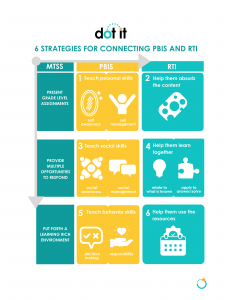You have probably attended multiple webinars and zoom meetings and read the reports about reopening. Maybe you have noticed one troubling trend…prioritizing social-emotional learning over academics. Leaders have said out loud that they will put academics aside for at least the first quarter of school. Wow. It isn’t hard to understand why people feel trapped in an either/or box right now. When we feel threatened our brains go into survival mode and our ability to think of options and alternatives decreases.
According to TNTP in their Learning Accelerations Guide: Planning for Acceleration in the 2020-2021 School Year, grade level goals must continue to be a priority. Here is what they say:
“We don’t mean ignoring social/emotional or other non-academic needs; addressing those are core to setting students up for success. But more than anything else, you should prioritize accelerating students’ learning by accelerating their exposure to grade-appropriate content—so that every student can get back to grade level. It won’t happen in a single year, but if you don’t set the goal and build a strategy around it, it won’t happen at all.”
Questions to Ask
What if you avoided the planning based on either SEL or academics and planned for BOTH instead? Should we do that? Could we do that? The research says we probably should.
These questions apply to your students when it comes to grade-level assignments. In general, PBIS addresses the first one and RTI addresses the second. In education, these questions are usually discussed in terms of student motivation and student performance.
Unfortunately, in today’s instruction, they tend to get decoupled. Once they are pulled apart, they are taught as discrete skills in isolation or as a reaction to something bad that happened. When one strategy doesn’t work, people try something else…which doesn’t work…and then something else, and so on and so on.
When strategies don’t work, it is usually not because they are bad strategies. It’s usually because you apply one at a time in isolation and when it “doesn’t work”, you drop it in favor of another one. To be successful, you need to apply multiple PBIS and RTI strategies at the same time. See how to connect PBIS and RTI using this Dot It framework:
What if you avoided the planning based on either SEL or academics and planned for BOTH instead? Should we do that? Could we do that? The research says we probably should.
These questions apply to your students when it comes to grade-level assignments. In general, PBIS addresses the first one and RTI addresses the second. In education, these questions are usually discussed in terms of student motivation and student performance.
Unfortunately, in today’s instruction, they tend to get decoupled. Once they are pulled apart, they are taught as discrete skills in isolation or as a reaction to something bad that happened. When one strategy doesn’t work, people try something else…which doesn’t work…and then something else, and so on and so on.
When strategies don’t work, it is usually not because they are bad strategies. It’s usually because you apply one at a time in isolation and when it “doesn’t work”, you drop it in favor of another one. To be successful, you need to apply multiple PBIS and RTI strategies at the same time. See how to connect PBIS and RTI using this Dot It framework. You can download it here.

Lesson Part 1: TEACH PERSONAL SKILLS as students absorb grade level c
s to get to the time when students begin working. What teachers often forget to do is gauge the emotional reactions of their students. Faces and body language, whether you are watching them on video or in your classroom, can tell you a lot about how students are feeling about the expectation. Do they expect to be bored, challenged, excited, or anxious? Do they appear confused or confident?
To set your students up for success, be proactive about teaching personal skills such as being aware of how emotions influence behaviors, recognizing personal traits, developing an understanding of how adults can help, and accepting personal responsibility.
- Ask students to tell you how they are feeling about the lesson. If you are using video, engage them in a poll to get the “temperature” on how motivated they are to engage in the lesson.
- Have them share strengths or personal traits they think will help them succeed.
- Be clear about when and how they should ask for help.
- Ask students to repeat the expectations. Role play examples and non examples of how you expect them to manage their emotions throughout the lesson.
Teaching self awareness and self management takes a bit more time in the short run, but In the long run, it pays big dividends for everyone. When you don’t teach these skills, you foster emotional dependency and you find the same students at your elbow day after day. It is much more efficient to connect instruction of personal skills within a lesson than it is to teach these skills in isolation or as a reaction. By linking these personal skills directly to learning, you are promoting a life long independent learning habit. As you listen to your students, you will get to know them better and better and improve your ability to help them succeed every day.
Lesson Part 2: TEACH SOCIAL SKILLS to give students multiple opportunities to relate to new concepts and apply them.
Some students find it difficult to relate new concepts to something they already know. Asking students to learn about the knowledge and experiences of others in your class not only boosts the link to the concept you are teaching, it also builds relationships and teaches students how to be aware of likes and differences among their peers.
Social awareness and social management is about recognizing the feelings of others, consideration for others, respecting similarities and differences, using communication skills and resolving conflicts.
For example, before the pandemic we were teaching a passage about beaver lodges. We asked students to share what they knew about beavers with a peer. One boy told his classmate about how the beavers behind his house were homeless because of a recent hurricane. The boy’s story engaged everyone in learning about beaver lodges for the rest of the lesson. And we, as teachers, became more socially aware ourselves!
- As students work together in small groups or in break out rooms, teach students that it is good for people to share different ideas.
- Provide them with sentence starters to guide the conversation. For example, “I agree/disagree with Thomas because…”.
- Teach students directly how to respond when challenged by peers. Teach them to say things like “I hear your point. I wonder if…” or “I’m not sure. Can you tell more?”
- Have students reflect on how they felt during small group work and how that impacted their learning. Then discuss the undiscussable. If someone felt attacked or not listened to, address it and solve it together.
Again, teaching social skills takes more time on the front end. But, when you don’t teach these skills, you are likely to find yourself correcting the same miscommunications and managing the same interpersonal conflicts day after day for the entire year. That means a lot more wasted instructional time in the long run and students who leave you without the social skills they will need to succeed at the next level.
Lesson Part 3: TEACH BEHAVIOR SKILLS so students make decisions and responsibly use resources in the learning environment.
The learning environment serves 2 purposes:
- It rewards and incentivizes certain behaviors.
- It serves as a resource for independent and group learning.
When students are completing assignments:
- alternative ways to complete tasks
- when to join and leave groups
- how to contribute
- when and how to use which resources and why
- teach them how to make ethical and safe decisions that respect boundaries
Remember, the content is not the goal. It is the VEHICLE for the goal. The goal is evidence of students LEARNING. Really effective teachers accept one critical premise: If my students have not produced visible evidence they have learned a concept, then I haven’t taught it. When you don’t teach behavior skills that lead to good decisions and responsibility you find that you are the person in the class who is doing most of the work. By teaching decision making and responsibility, you are nurturing independent learners who need you less and less every day.
Why do this? The 10X Success Rule
So here is the big secret. When you plan to use all 6 strategies for connecting PBIS and RTI, your lessons are 10X more likely to succeed. That means the majority of your students successfully met the grade level expectation. That’s right, 10X more successful lessons. Using any less than 4 of the 6 strategies is likely to lead to a big disappointment. To learn more about the 10X rule, check out this video from Vitalsmarts.
By integrating social emotional learning into the academic lesson, you are empowering student skills in both. Teaching social emotional skills helps students understand why learning the lesson is important. Providing grade-level instruction gives students the ability to absorb, relate, apply, and succeed in grade level content. Connecting them all together leads to 10X the success.






